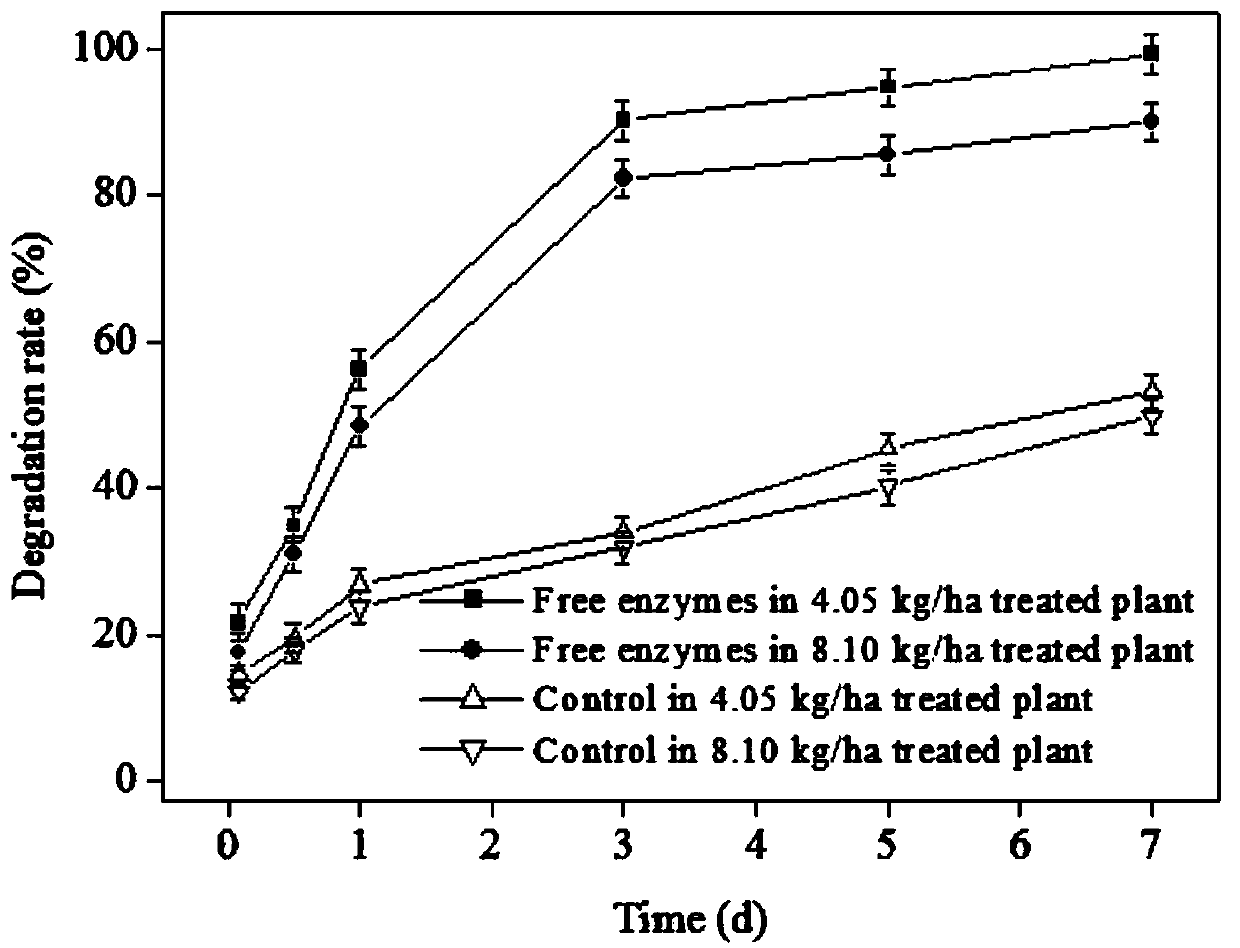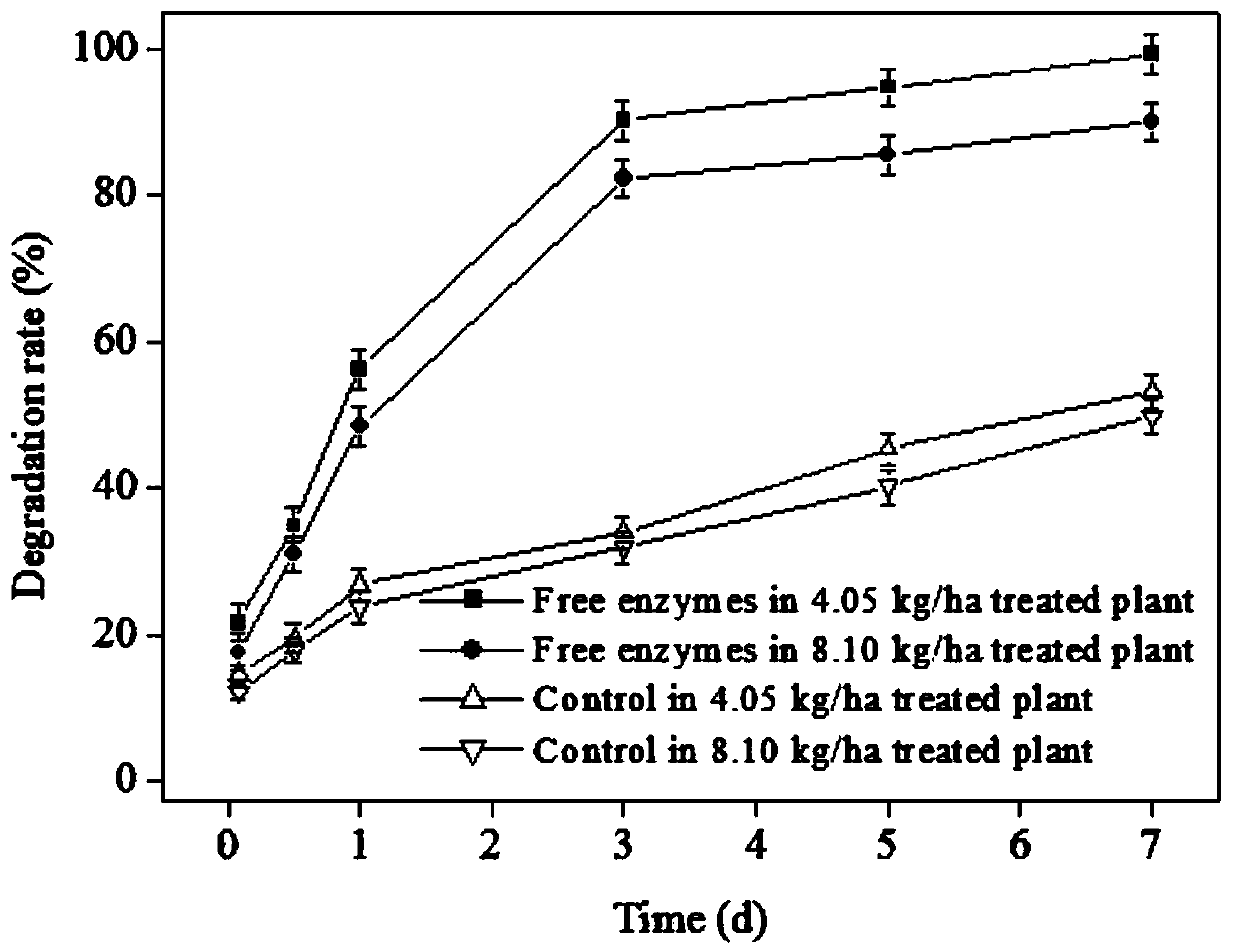Preparation method and application of Brevundimonas naejangsanensis enzyme agent to efficiently degrade dimethachlon
A high-efficiency degrading bacteria and degrading enzyme technology, applied in the field of biotechnology degradation of pesticide residues, can solve problems such as still sterile nuclear net biodegradation, and achieve the effects of environmental friendliness, remarkable effect and good quick effect.
- Summary
- Abstract
- Description
- Claims
- Application Information
AI Technical Summary
Problems solved by technology
Method used
Image
Examples
Embodiment 1
[0017] 1. Enzyme preparation:
[0018] 1) Bacterial suspension preparation: Add 2 mL of sterile phosphate buffer under aseptic conditions and shake in parallel in the culture dish cultured for 48 hours, and gently scrape off the colonies on the surface of the medium with an inoculation loop to form a crude bacterial suspension. liquid, and transferred it to a liquid fermentation medium (maltose 7g / L, yeast extract 6g / L, NaCl 3g / L) at a pH of 7.5-8, 30-35°C, and 150-200rpm for 48 hours. Immediately centrifuge the fermented broth taken out at 10000r / min (3-4°C) for 10min, collect the wet cells, and wash them three times with sterile phosphate buffered saline. Then mix the sterile phosphate buffer solution with the wet cells, and control the number of cells to be ≥6×10 8 cfu / mL. The prepared bacterial suspension was stored at 3-4°C for later use.
[0019] 2) Extraction of free enzymes: Ultrasonic crushing was performed on the bacterial suspension prepared in step 1) to extract...
PUM
 Login to View More
Login to View More Abstract
Description
Claims
Application Information
 Login to View More
Login to View More - R&D
- Intellectual Property
- Life Sciences
- Materials
- Tech Scout
- Unparalleled Data Quality
- Higher Quality Content
- 60% Fewer Hallucinations
Browse by: Latest US Patents, China's latest patents, Technical Efficacy Thesaurus, Application Domain, Technology Topic, Popular Technical Reports.
© 2025 PatSnap. All rights reserved.Legal|Privacy policy|Modern Slavery Act Transparency Statement|Sitemap|About US| Contact US: help@patsnap.com


